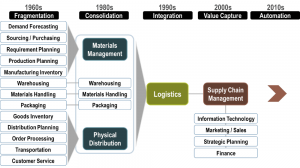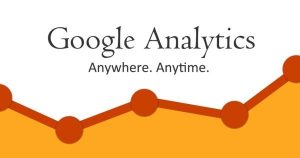While many people may think of them as two separate elements, your SEO and email marketing can each work to enhance the other. While they may indeed be disparate concepts, to help your SEO generate more and better leads and to use your email marketing to enhance your SEO, just remember to follow the four D’s: Define, Determine, Develop and Deliver.
Define the SEO keywords that are right for your business
While this is SEO 101, it bears repeating that, if you want your online business to generate traffic, an understanding of the search terms specific to your company’s goods or services is hugely important. Sometimes called pay per click (PPC) terms, these keywords are those terms where you want your business to rank well. Further, these are the terms that, in general, people are going to type in when they’re ready to buy.
Obviously, these keywords are going to be different for every business. So, for your business, think in terms of what people are going to search for or will click on in an ad when they’re ready to buy what you have to offer. To illustrate, let’s look at my own business, CLV Boost, as an example. My primary PPC terms would likely be:
- Email Marketing Consultants Boston
- Marketing Automation Agency
- Landing Page Copywriting Consultants
- Experienced InfusionSoft Consultants
Now, think about comparable terms for your business. When someone is ready to buy what you have to offer, do you know what search terms they use or what words make them click on your ad? Figure that out and you’re ready to move to the next D!
Determine terms of related but indirect interest
If the terms above are those that might get customers to the bottom of your funnel, I like to think of search terms that are almost secondary to my primary keywords as “top-of-the-funnel.” As such, these are terms that will be more likely generate an email opt-in rather than a purchase. The customer using these terms may not be ready to buy, but they’re in the wheelhouse. Most likely, they’re looking for information right now, and that may lead to a purchase down the road.
So, how do you determine these top-of-the-funnel terms? Start by finding major categories of your PPC terms and keywords and build out. Think about what goes into your prospects‘ minds as they’re starting to explore and beginning the buying process. For each category of your direct PPC terms, come up with 6-12 related, indirect interests areas that apply to that keyword category.
Again, using my business as an example, some of these related, top-of-funnel terms might be:
- How to make a better email newsletter
- How to set up InfusionSoft
- Compare InfusionSoft to HubSpot
- How to create profitable autorepsonder sequences
- How to test my email marketing
- Case studies of eCommerce email marketing
(Note that those are just a few terms related to each of my PPC categories. As noted above, the ideal number is 6-12 per category.)
So, right now, you’re likely asking “Why would I take the time to market to someone who’s not ready to buy?” For one, there’s less competition for these terms than the primary keywords we listed above. In fact, these terms likely aren’t worth PPC advertising. Ultimately, you’ll want to use these “related” keywords to create content to enhance lead generation. And to do that, move on to the next D!
Develop relevant blog topics and opt-in resources
Now that you have 6-12 indirectly related keywords per PPC category, create content such as blogs and opt-in resources to draw those searchers to your website. Remember that, unless your email list and sales are totally saturated, it’s best to keep this content within the realm of your business. Further, when developing this content focus, more on relevant blog topics and less on opt-in resources.
This content can take a variety of forms, such as white papers, video blogs, blog entries, webinars or whatever requires an opt-in. Once again, to use CLV Boost to illustrate, the content I might work up based on my secondary keywords would include:
- A Double Your Profits From Autoresponders white paper
- A white paper titled Email Marketing Software Buyer’s Guide
- Webinar titled Action-Based Email for eCommerce
- A video series titled 4 Great Landing Page Case Studies
Creating this content offers you two huge benefits. First, you can now more effectively tailor your autoresponders (since you now have a more specific handle on what people are looking for from your business) and, secondly, you have more information that will allow you to better segment your database marketing. When your relevant content is in place, you’re ready for the fourth D.
Deliver on your marketing automation and database marketing
Now that you’ve defined your keywords, determined those related terms and developed relevant content, it’s time for all your work to pay off. How? Well, as an example, let’s say an interested, information-seeking customer lands on my website following a search for “What makes a good landing page.” If he or she opts-in for my video series showing 4 Great Landing Page Case Studies, I can create an autoresponder tailored to what they’re interested in (rather than just sending out a generic autoresponder covering every element of my business).
The largest benefit of that tailored autoresponder sequence is that your customer is more likely to hire you or purchase your product because you’ve provided them with information that directly addresses their problems or goals.
For instance, you might set up a 12-email autoresponder sequence, with the first 11 offering plenty of content related to their initial inquiry and wait until the final email to ask for a purchase (Smart Passive Income provides a breakdown of different autoresponder sequences). Customize your sequence as it best fits your business, because doing so allows you to connect the dots from keyword to related terms to related content to sales.
While that’s an example of using SEO to bolster your email marketing, don’t forget that one can also use email marketing to enhance your SEO. Here, while you’re still using your email as your marketing vehicle, this is where you highlight that related content you created in your email, whether it’s a blog, video blog or webinar. Those blog links in your email sequence can turn into visits to your page, Facebook Likes and even comments.
And that’s where the SEO/email marketing cycle comes full circle. You now have an automated sequence that not only encourages a prospect to become a customer, but also drives engagement and boosts SEO based on the articles they’re interested in. Your prospect gets information on topics they care about and you get closer to making a sale while also boosting your SEO benefits.
Granted, given the differences in every business, I’ve simplified the SEO/email marketing cycle process somewhat. However, if you want to make the most of your email marketing and boost your SEO, look at your business in 4D!
Define the keywords for your particular business. Determine those related, indirect terms. Develop content that relates to those terms. Deliver what your prospects are looking for via marketing automation and database marketing. Do all that and your business can take advantage of one more D: Dollars!
Digital & Social Articles on Business 2 Community(108)








